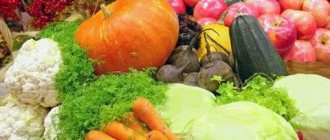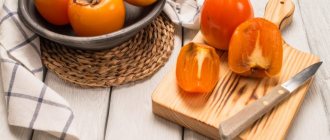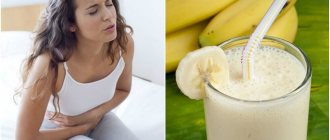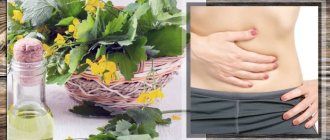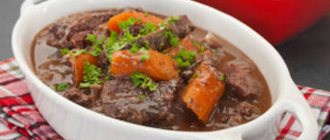The text is for informational purposes only. We strongly urge you not to use diets, resort to any therapeutic menus or fasting without medical supervision. We recommend reading: “Why you can’t go on a diet on your own.”
Nutrition for stomach ulcers and 12p. intestines - a dietary diet aimed at restoring damaged mucous membranes. This is a prerequisite for full treatment and prevention of relapse of the disease.
A stomach ulcer is dangerous because it can lead to the development of serious complications that threaten the patient’s life. The consequences of the pathological process can be: penetration, perforation of the ulcer and bleeding, malignancy and development, pyloric stenosis. Remember, peptic ulcer is a dangerous diagnosis that requires urgent medical treatment.
To improve the condition, reduce the frequency of relapses, protect the patient from complications and preserve his ability to work, drug therapy (or preventive measures) is usually combined with proper nutrition. Strictly limiting the patient’s diet to “allowed” and “forbidden” foods increases the chances of recovery and accelerates the scarring of ulcers.
Therapy will not bring results if you do not adhere to the correct diet.
Ulcer - what is it?
This is a chronic disease accompanied by the formation of defects (ulcers and erosions) on the mucous membrane of the stomach and 12p. intestines. In 70% of cases, the pathology develops in men between the ages of 20 and 40 and is accompanied by frequent relapses, especially in spring and autumn.
As a result of exposure to excess hydrochloric acid and enzymes, the lining of the stomach is damaged and an ulcer occurs.
According to statistics, 14% of the world's population suffers from the disease.
The main cause of the disease is an imbalance between aggressive factors and the protective mechanisms of the stomach.
Factors that increase the risk of developing an ulcer include smoking, poor nutrition, frequent stressful situations, abuse of alcohol, carbonated and caffeine-containing drinks, taking anti-inflammatory drugs on a regular basis (such as ibuprofen), Helicobacter infection, eating hot or cold foods that damage the gastrointestinal tract .
Overstrain of the nervous system is accompanied by spasms of blood vessels and muscles in the digestive tract, which leads to impaired blood circulation in the gastric mucosa and aggressive effects of gastric juice.
The prognosis of peptic ulcer disease depends on the localization of the process, age, gender of the patient, the presence of complications, features of the clinical course of the pathology, household and professional factors. In advanced, severe stages, complications may develop that require surgical intervention.
Fruits
Fruits are discussed separately in the treatment of peptic ulcers. In the diet, preference is given to varieties of fruits and berries without hard skin that have a sweet taste. The harsh peel of the fruit is difficult to digest, irritating the mucous membrane. Fruits and berries can be consumed pureed, boiled, stewed or baked. It would be correct to prepare compote or jelly from them.
Fruits included in the list of suitable for use:
- bananas;
- strawberry;
- viburnum;
- currant;
- sea buckthorn;
- apples;
- pears.
It is recommended to prepare compotes and mousses from the berries, which will avoid loading the mucous membrane.
Diet principles
What postulates should be followed when preparing a dietary diet?
- Balance. The patient's daily menu should be varied, and its total energy value should be at least 3000 calories.
- Minimum portion size. To avoid overloading the damaged organ, a single meal should not exceed 150 grams (fit in the palms of your hands).
- Avoiding foods that increase gas formation.
- Fractionality. Breaks between meals vary in the range of 2 - 3 hours.
- Minimize salt intake.
- Prohibition on fried, spicy, fatty, smoked products, marinades.
- Increasing the amount of water you drink to 2 liters per day, provided there are no diseases of the urinary system or thyroid gland.
- Prohibition on cold and hot food. Dishes with temperatures up to or above 30 degrees slow down the restoration of epithelial tissue of the stomach and inhibit the function of enzyme formation.
- Priority is given to gentle food that does not irritate the already inflamed walls of the stomach. Acceptable variations in the heat treatment of dishes: steaming, stewing, boiling, blanching.
- Refusal of foods that stimulate the production of gastric juice.
- The principle of zigzag nutrition. The essence of the method is to train the gastrointestinal tract. It implies that for a short period of time the patient is allowed to consume foods from the prohibited list (within reasonable limits), and then follow the diet menu again. This principle is practiced only at the recovery stage.
- Tracking the time it takes to digest food. Liquid in the body is retained in the stomach for 0.5 - 1.5 hours. Boiled vegetables, baked goods, and cereals take up to 3 hours to digest. And legumes, meat and fish load the digestive tract for 5 hours. At the same time, fruits eaten as part of the main meal, together with other food products, inhibit the absorption of the latter, which leads to food rotting. In this regard, they are recommended to be consumed exclusively in between meals.
- The principle of individuality. When composing your diet, take into account the characteristics of the disease and the body. If there is an individual intolerance to an approved product, it is excluded from the diet.
The main goal of nutrition for ulcers is to normalize the digestion process and accelerate the regeneration of the mucous membrane that lines the stomach.
To improve the patient’s condition, the diet must be followed for at least 1 year after an exacerbation of the pathology. Only in this case is it possible to permanently heal defects in the gastric mucosa and prevent repeated cases of exacerbation of the disease.
Cottage cheese
Fresh and tasty, cottage cheese satisfies hunger for stomach ulcers. It can be included in the menu of patients during all stages of the disease, with the exception of days of exacerbation. Its dietary properties are a short residence time in the stomach, high digestibility, high content of microelements and vitamins (B, PP, A).
Those suffering from peptic ulcer disease should include fresh cottage cheese of medium fat content in their diet without adding sugar or salt, or any fillers (dried fruits, nuts, flavorings). The product lends itself well to culinary processing - it makes excellent soufflés, casseroles, lazy dumplings, steamed curds, which help diversify the patient’s menu.
Fresh cottage cheese should not be consumed during an exacerbation of pathology; it is included in the menu during the recovery period after culinary processing. To improve the taste, honey can be added to the dish.
Cottage cheese for stomach ulcers must be on the patient’s daily menu. This is the only dairy product on the use of which doctors do not place any special restrictions. Cottage cheese contains a lot of calcium, vitamins, and iron.
If a patient consumes unpasteurized cottage cheese during illness, then it must be heat treated. This dairy product can be prepared at home. And pasteurized cottage cheese can be given to the patient with fruits, in the form of curd mass, mousses, puddings and other desserts.
Prohibited Products
An ulcer is a dangerous disease that requires long-term treatment. For successful therapy and restoration of the patient’s health, food that irritates the gastric mucosa, takes a long time to digest, increases gas formation, and contains a large amount of salt is excluded from the patient’s diet.
What should you not eat?
- Sauerkraut cabbage soup, okroshka.
- Smoked products, sausages. The exception is ham in moderate quantities (up to 70 grams per day).
- Rich meat and fish broths, soups based on them.
- Dairy products with acid (tan, ayran, kefir).
- Cucumbers, tomatoes, tomato paste.
- Mushroom dishes.
- Fatty meat, fish, lard, caviar.
- Vegetables with a high fiber content, which make it difficult to digest food: peas, beans, rutabaga, white cabbage, turnips, radishes, radishes.
- Cereal side dishes from corn, wild rice, pearl barley, bran granules, muesli.
- Canned foods, including pates.
- Fatty dairy products: cream, cheeses, condensed milk, whole milk, buttermilk.
- Sour berries and fruits: lemon, orange, lime, gooseberries, figs, grapes, pineapple, tangerine, currants.
- Hard-boiled eggs.
- Products of plant origin that irritate the gastric mucosa: garlic, onion, sorrel, rhubarb.
- Salty, spicy sauces: ketchup, vinegar, mustard, horseradish.
- All carbonated drinks.
- Pastries, rye bread.
- Ice cream and chocolate.
- Alcohol, tea, coffee, cocoa.
- Dried fruits, nuts, apricots.
When processing meat, veins and cartilage are removed from it, which are difficult to digest and burden the digestive tract.
Authorized Products
If you have a peptic ulcer, you should never fast, otherwise the stomach will begin to digest its walls, which can lead to complications and worsening of the patient’s condition. The ideal interval between meals is 3 hours. During breaks, drink plenty of clean and alkaline water, anti-inflammatory herbal infusions (chamomile, St. John's wort, sage, linden).
List of permitted products:
- Wheat bread (yesterday's).
- Meat soups with secondary broth.
- Biscuit.
- Baked goods made from unleavened (yeast-free) dough filled with lean meat, cottage cheese, fish, and apples.
- Milk or cereal soups.
- Non-fatty fish (boiled or steamed, in foil).
- Main courses from dietary varieties of meat without veins: turkey, beef, chicken, rabbit. It is best to cook by steaming, no frying. The priority is soufflé, meatballs, zrazy, meatballs, cutlets.
- Scrambled eggs.
- Dairy products with a small percentage of fat content: sour cream, yogurt, fermented baked milk, milk, cottage cheese, unleavened cheeses.
- Porridge: oatmeal, semolina, buckwheat, rice. In addition, boiled pasta is beneficial.
- Natural honey, marshmallows, marshmallows, marmalade, jelly, mousses.
- Baked apples and pears, fresh sweet berries and fruits, crushed to puree.
- Vegetable oil (sunflower or unrefined olive), in moderation.
- For dressing dishes, give preference to white milk sauce.
- Drinks allowed are compotes, weakly brewed teas, freshly pressed sweet juices diluted with water by 50%, decoctions of wheat bran and rose hips.
According to medical research, in 90% of cases, stomach ulcers develop due to the bacterium Helicobacter Pylori. Therefore, to treat acute attacks of the disease, along with antibiotics, products and agents with bactericidal properties (honey, cauliflower, white cabbage, broccoli) are used. If you have a stomach ulcer, any vegetables in your diet should be heat treated so as not to worsen the patient’s condition. It all depends on the individual characteristics of the body: the aggressiveness of the gastric environment.
Contraindications and risks
An unavoidable problem may be individual intolerance to dairy products, which is observed in a number of children and adults. When consuming them, a person feels weakness, intestinal upset, itching and skin rashes.
Lactose intolerance can cause a similar reaction - a person reacts with poor health, bloating and nausea.
The type of dairy products and their freshness are important - consuming expired or stale kefir and cheese is unacceptable for patients with gastrointestinal pathologies and stomach ulcers.
Only fresh milk and products made from it can be beneficial for stomach ulcers. When choosing them in the supermarket, you need to pay close attention to the composition and shelf life of kefir, yogurt and milk. A shelf life of more than 3 days is a reason to refuse the purchase; in this case, the product has no nutritional value.
There is a large amount of counterfeit sour cream and butter on sale. A significant proportion in their composition is occupied by palm oil, stabilizers, flavorings and preservatives, which can provoke increased secretion of gastric juice and exacerbation of the disease in patients with ulcers.
It is best if, for intestinal diseases and duodenal and stomach ulcers, the patient includes only yogurt, kefir and homemade cottage cheese in the diet. To do this, it is advisable to use ready-made starter cultures, which can be purchased at the pharmacy.
Medicinal products
Despite the wide range of foods and drinks allowed for consumption, for stomach ulcers, among them there are those that have a healing effect. They support the body during such a critical period and actively fight the bacterium Helicobacter Pylori, which causes ulcers and erosions on the mucous membrane of the stomach and 12p. intestines.
These include:
- Milk. Envelops the walls of the stomach, speeds up the healing process. However, you should drink the drink carefully, as it can cause heartburn and pain.
- Honey. Relieves inflammation and irritation of the gastric mucosa, reduces secretion and neutralizes the effect of hydrochloric acid, relieves pain. In addition, honey increases hemoglobin levels and prevents the development of anemia.
- Freshly squeezed cabbage juice. The medicinal properties of the drink are due to the content of anti-ulcer vitamin U and a stable form of ascorbic acid in the composition. It is the juice that fights pathogenic bacteria Helicobacter Pylori and stimulates scarring of wounds.
- Yogurt. Biologically active bacteria (Bulgarian bacillus, probiotics, lactic acid streptococci) included in the product suppress the activity of harmful microorganisms that cause stomach ulcers. In addition, yogurt contains a bioavailable protein that has a wound-healing effect on the ulcerated surface of the mucous membrane of the damaged organ.
Interestingly, in the laboratories of Guangzhou, China, an acidophilic yogurt starter containing the Helicobacter pylori adhesin gene was invented. This component fights pathogenic flora, which causes exacerbation of stomach ulcers. Today the product is at the development stage with the goal of subsequent introduction into mass production.
Cheeses that can be eaten with gastritis with low acidity
In fact, the above fresh cheeses can be eaten with low acidity. But durum varieties are best consumed only with low acidity. We also must not forget that you can consume completely natural cheeses for gastritis, and not the so-called “cheese products”, which contain a large number of preservatives and flavorings. Such prohibited products include Dutch and Russian cheese.
Among the hard varieties, it is best to choose cheddar . This type is also produced in low-fat form, however (judging by reviews from connoisseurs) the taste and texture of the product are significantly distorted. Also, low-fat cheddar contains virtually no calcium, which must be taken into account when developing a complete diet. The pH is 5.5%, but consumption with high acidity is not recommended, because there is a risk of damaging the already inflamed stomach.
Diets for ulcers
For effective treatment of ulcerative pathology - restoration of failure of the digestive process and regeneration of stomach tissue, patients are prescribed diet No. 1a (during an exacerbation for 10 - 20 days, depending on the patient’s condition), then switch to a more advanced version No. 1 or 5 (at the stage of remission ), at the discretion of the attending physician. In any case, to improve your health, the prescribed diet must be strictly followed, without making independent adjustments.
Diet No. 1
Prescribed to patients at the stage of subsiding exacerbation, restoration of the mucous membrane.
The duration of diet No. 1 varies from 3 to 5 months, and the calorie content of the daily diet reaches 3000 calories. This method of eating involves eating boiled or steamed dishes, ground into a homogeneous mass. In this form, products do not have a mechanical effect on the walls of the stomach and are quickly digested without loading the digestive tract. The ratio of B (proteins) : F (fats) : Y (carbohydrates) of the daily menu should correspond to 5 : 1 : 1, and the frequency of meals should occur every 2 – 3 hours.
The diet menu consists of the following products: lean boiled meat, yesterday's baked goods, egg whites, unleavened biscuit, milk soup, pureed cereal porridge, pudding, vegetable puree, small vermicelli, non-sour cottage cheese, sour cream, milk. For dessert, you are allowed to eat boiled or baked sweet fruits (strawberries, pears, apples).
Diet No. 1a
It is prescribed during an exacerbation of peptic ulcer disease, in which bed rest is a prerequisite.
This is a strict subtype of diet No. 1. To soothe the irritated gastric mucosa, foods that increase the production of gastric juice are excluded from the patient’s diet. When using diet No. 1a, food is taken in small portions up to 8 times a day. The ratio B: F: Y is 0.8: 0.8: 2, and the energy value of the diet should not exceed 2000 calories per day.
The consumption of vegetable dishes and bread is prohibited. The basis of the diet is slimy soups and porridges (from rice, semolina, oatmeal), milk, butter (in moderation), lean fish and meat, soft-boiled eggs. You can use berry jelly, fruit soufflé, honey, and jelly in your diet.
Before serving, the dishes are rubbed through a sieve to avoid injury to the walls of the stomach.
Diet No. 5
Designed for proper nutrition of the patient after the symptoms of an exacerbation have been relieved, during the recovery stage. Diet No. 5 creates favorable conditions for the normalization of the digestive tract and implies the consumption of balanced foods. Exceptions: fried foods, fats (refractory), foods rich in essential substances (ginger, garlic, onions), cholesterol-forming food components, mushrooms, radishes, sorrel. The preferred processing method is still: boiling, baking in the oven, steaming.
You can include sweet vegetables and fruits, dried bread, biscuits, cheesecakes, cabbage soups, tongue, aspic, and mild hard cheese in your diet.
For peptic ulcer disease, the use of herbal decoctions based on linden blossom, yarrow, St. John's wort, chamomile, plantain, fennel, marshmallow, and licorice is encouraged.
To coat the stomach and reduce the aggressive effect of gastric juice on the inflamed walls, it is recommended to take 100 milliliters of flax seed jelly daily 30 minutes before meals.
Remember, a diet for ulcers cannot replace the main treatment, but it plays an important role for the human body: it accelerates the healing of eroded areas and prevents complications.
Beverages
Patients are interested in what tea they can drink for ulcers.
Green tea is useful for ulcers. The drink is rich in antioxidants, helps heal ulcers and relieve inflammation. Don't drink it too strong or hot.
Patients often ask the question which juices will not harm stomach ulcers. Vegetable juices that are allowed for illness include cabbage, potato, carrot, beet or celery juice. To improve taste, dilute with apple drink. Fruit juices for ulcers can only be drunk from ripe and sweet fruits. Juices that are too sweet are diluted with boiled water.
Chicory has a positive therapeutic effect for duodenal ulcers. A drink from the root of the plant replaces coffee in taste without causing side effects. Kombucha is a healing drink.
FAQ
Is it possible to drink lactic acid drinks (kefir, fermented baked milk, yogurt) if you have an ulcer?
During the period of exacerbation of the disease, kefir and fermented baked milk are prohibited. In addition, in the next 5 days after the attack has stopped, you should also refrain from drinking these drinks, so as not to provoke a relapse of the pathology. Subsequently, they can be gradually introduced into the diet, from small doses (from 50 milliliters).
The main condition is that kefir and fermented baked milk must be fresh, non-acidic, with a minimum fat content. Before drinking, drinks are slightly warmed. To speed up the scarring of the ulcer, add 5 milliliters of vegetable oil.
Yogurt is a priority food product for stomach diseases, since it contains bifidobacteria that inhibit the effect of Helicobacter Pylori.
Is it possible to eat cucumbers and tomatoes?
If you have a peptic ulcer, you should avoid eating tomatoes, as they reduce the rate of healing of ulcers and increase the acidity of gastric juice. As a last resort, tomato fruits can be eaten after preliminary heat treatment with boiling water, removing the skin. Cucumbers are contraindicated during the period of exacerbation of the disease, however, during the remission stage, it is allowed to include half a vegetable per day in the patient’s diet - without the skin, in crushed form.
Can you eat bananas?
Judgment about this fruit is contradictory. Nutritionists have different opinions regarding the inclusion of bananas in the diet of a patient with damage to the gastric mucosa. Some claim that it reduces the acidity of gastric juice, eliminates pain, and heals ulcers. Others are convinced that bananas are “heavy” foods that burden the digestive tract and take a long time to digest, which is unacceptable for ulcers.
Is it possible to eat cottage cheese and cheese?
Yes, these are valuable foods for a person with an ulcer. Cottage cheese is a coagulated milk protein that supplies iron, retinol, niacin, and B vitamins to the body. There is no whey in it. It is worth choosing cottage cheese with a minimum percentage of fat content. The product can be used to prepare soufflés, mousses, creams, and casseroles.
Cheese is a storehouse of amino acids, calcium, and easily digestible protein. This is an alternative to meat products. When choosing hard cheeses, give preference to a product with low salt and fat content.
Can I have eggs?
Yes, provided they are cooked soft-boiled. Eggs, hard-boiled or fried, should not be consumed by patients with stomach ulcers. You should avoid taking the product in its raw form, as it increases the risk of contracting salmonellosis.
Egg white is well absorbed by the human body, and the yolk supplies nutrients: calcium, cobalt, iron, phosphorus, vitamins A, , , , .
Can I have watermelon?
No, it contains coarse fiber, which stimulates the production of gastric juice, increases its acidity, and aggravates the course of the disease.
Can I have seeds?
No, they irritate the gastric mucosa and can mechanically injure it, which threatens to aggravate the pathological process. In addition, seeds contain difficult-to-digest fats. As a result, after the nuclei enter the stomach, the patient feels discomfort in the epigastric region, flatulence and pain occur, the acidity level increases, and the ulcerative process worsens.
Can I have garlic?
This product is strictly prohibited; it cannot be consumed in its pure form or as part of prepared dishes, since it has a pungent taste that irritates the gastric mucosa, increases pain, provokes a relapse of the disease (during remission), a sharp deterioration in the patient’s condition (during acute stage).
Can I have coffee?
No, the drink increases the production of hydrochloric acid, which accelerates the development of the disease. During stable remission, natural brewed coffee can be consumed in moderation (up to 50 milliliters at a time), with weak, half-diluted milk.
Can I drink soda?
The most common symptoms of ulcers are belching and heartburn. To relieve discomfort and relieve the first symptoms, many people use soda. However, not every one of them thinks about whether it is safe and what it can lead to?
The substance actually neutralizes hydrochloric acid, which is formed in excess quantities during stomach diseases. It is worth considering the fact that the soda solution brings relief for a short period of time.
Within 0.5 - 1.5 hours, when it leaves the organ, the body will release a new portion of acid in increased quantities. Which will lead to increased stress on the stomach. In addition, when it reacts with soda, carbon dioxide is released, which puts increased pressure on the walls of the stomach. As a result, the risk of perforation increases at the sites where ulcers form.
If you have a stomach ulcer, you should not drink soda in any quantity.
Why should you not drink strong alcoholic drinks?
This is justified by the fact that ethyl alcohol causes inflammation of the stomach walls, slows down the digestion of food, increases the acidity of gastric juice, which as a result aggravates the pathological process, and increases the risk of gastric bleeding. Alcoholic drinks can be consumed up to 100 milliliters every 2-4 days, when there is no exacerbation of the disease. At the same time, the day before you need to eat a hearty meal of gentle food that envelops the stomach. This is the only way to protect the walls of the organ from the aggressive effects of a strong cocktail.
Is it possible to smoke?
Absolutely forbidden. Tobacco smoke has a stimulating effect on the digestive tract; nicotine inhibits the regeneration process, increases existing inflammation, and provokes belching, heartburn, and pain.
According to statistics, smokers die from stomach ulcers 5 times more often than people without a bad habit.
Yogurt
Like other lactic acid products, yogurt for stomach ulcers should be fresh, without flavoring additives. It is best to prepare it at home with moderate fat content (2.5%) without added sugar.
To do this, you will need homemade milk of medium fat content, yogurt starter (consists of lactic acid bacteria and Bulgarian bacillus). For ease of preparation, you can use a special device - a yogurt maker.
During industrial production, stabilizers, preservatives, flavoring components, flavorings, and dyes are added to the product. This ensures a long shelf life of the product and its nutritional value is questionable.
Real yogurt (unsweetened, with live bacteria) for stomach ulcers, relieves pain in the abdominal area, enveloping its irritated walls, regulates acidity, populates the digestive tract with beneficial microflora, and blocks the proliferation of Helicobacter pylori. The daily norm is 250 grams, which is best divided into portions and eaten throughout the day.
Menu for a week during an exacerbation of a stomach ulcer
To stop an attack, the patient’s diet consists exclusively of pureed boiled dishes without the addition of spices, in a liquid, mushy form. The frequency of meals is 6–7 times a day, the size of one serving is up to 150 grams. Dishes are consumed exclusively warm; they should not be cold or hot.
Day No. 1
- 8.00 – boiled buckwheat;
- 10.30 – puree from boiled vegetables (broccoli and carrots);
- 13.00 – turkey soufflé, slimy oatmeal soup;
- 15.30 – soft-boiled egg;
- 18.00 – boiled rice porridge;
- 20.30 – cottage cheese soufflé.
Day No. 2
- 8.00 – oatmeal, dried biscuit;
- 10.30 – steamed omelette;
- 13.00 – boiled fish fillet, grated beets;
- 15.30 – slimy green buckwheat soup;
- 18.00 – strawberry jelly;
- 20.30 – semolina porridge.
Day No. 3
- 8.00 – rice porridge;
- 10.30 – boiled veal (pureeed), boiled beets;
- 13.00 – cottage cheese casserole;
- 15.30 – soup with barley (slimy);
- 18.00 – oatmeal cooked in water;
- 20.30 – pureed boiled apples (without seeds, peel).
Day No. 4
- 8.00 – boiled rice;
- 10.30 – soft-boiled egg;
- 13.00 – minced chicken meatballs, slimy oatmeal soup;
- 15.30 – buckwheat porridge;
- 18.00 – puree soup from boiled vegetables (carrots, beets, kohlrabi);
- 20.30 – peach mousse.
Day No. 5
- 8.00 – slimy green buckwheat;
- 10.30 – pear jelly, without added sugar;
- 13.00 – oatmeal;
- 15.30 – boiled zucchini, steamed turkey;
- 18.00 – milk jelly;
- 20.30 – sugared rosehip infusion.
Day No. 6
- 8.00 – rice porridge;
- 10.30 – apple and pear puree from boiled fruits without peels or seeds;
- 13.00 – boiled fish (hake), boiled carrots;
- 15.30 – boiled beets, grated;
- 18.00 – barley soup (slimy);
- 20.30 – milk jelly.
Day No. 7
- 8.00 – semolina porridge;
- 10.30 – steamed omelette;
- 13.00 – rabbit soufflé, slimy rice soup;
- 15.30 – vegetable puree from boiled pumpkin and zucchini;
- 18.00 – baked cottage cheese with honey;
- 20.30 – milk jelly.
Subsequently, when the attack of the disease passes, you can expand the menu, introduce new products, move from dietary menu No. 1a to table No. 1 or No. 5.
